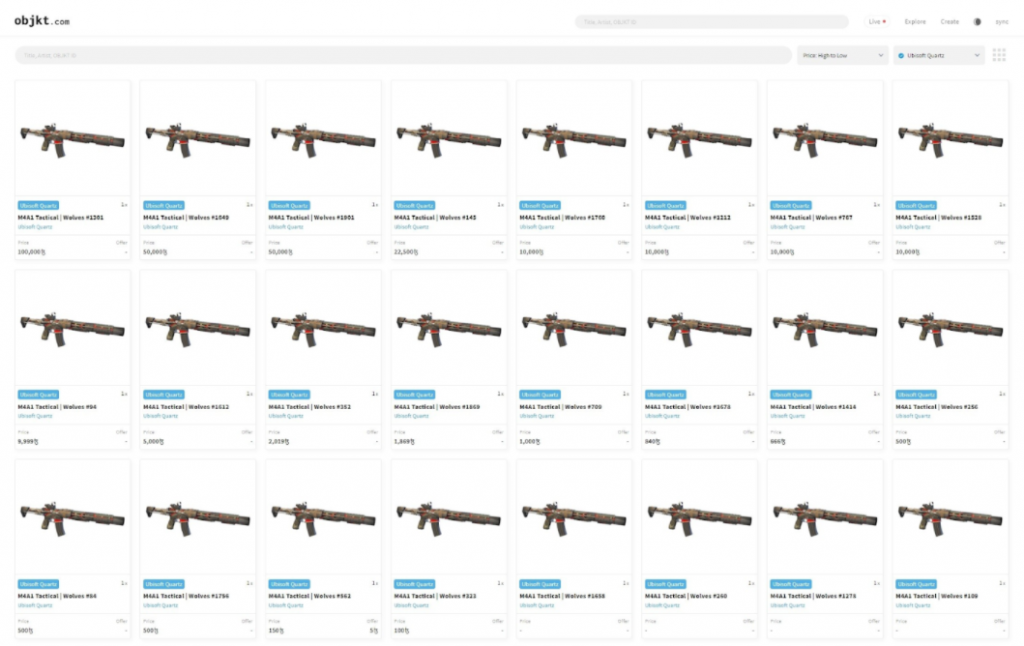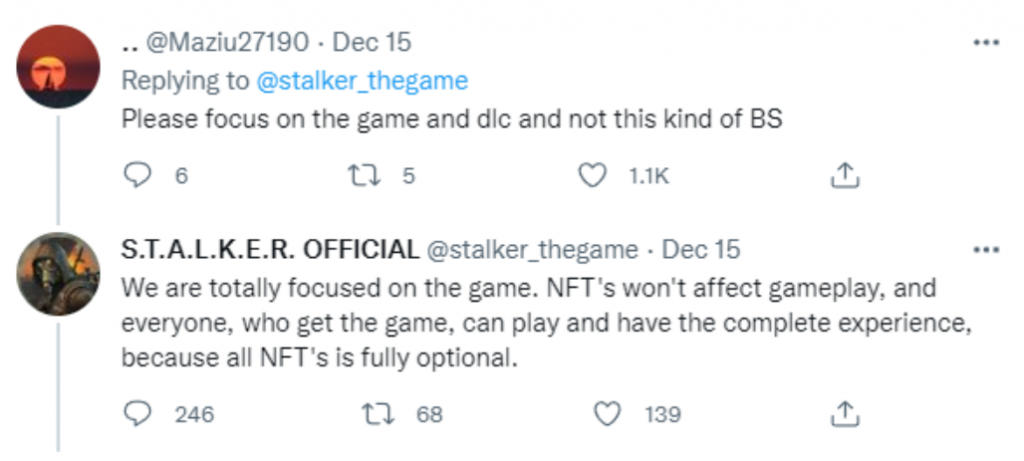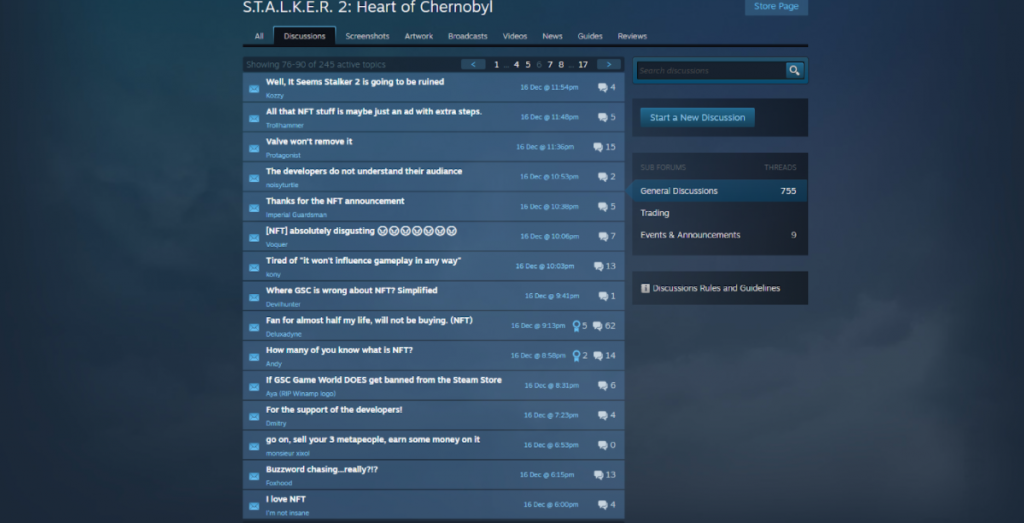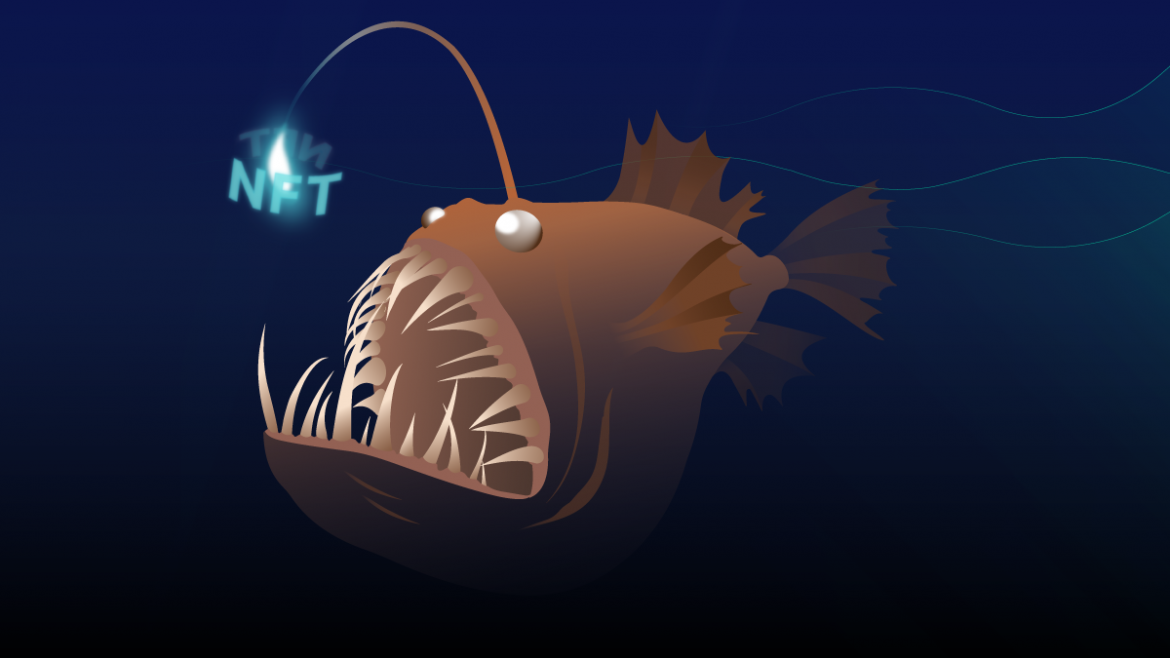Lately, the internet has actively been discussing the topic of game development companies trying to integrate NFT tokens in games. The community has split into two opposing camps: some criticize the use of any form of blockchain technology in games, while others see it as an inevitable evolution of in-game property ownership, which NFT experts warned us about over a year ago.
In reality, there are significantly more critics of the concept of non-fungible tokens in games than supporters. This is why we have decided to find out what the problem is with NFTs in gaming, and why the vast majority of players react negatively even to the mention of blockchain technology in their favorite video games.
Let’s start with the real breaking news, which, in some sense, is the inspiration behind this research.
Ubisoft Quartz and NFT for Ghost Recon
On December 7, 2021, gaming giant Ubisoft announced the launch of the beta version of its Ubisoft Quartz service, offering in-game cosmetic items in NFT (non-fungible token) format. The company said that Quartz will become the “energy-efficient” platform on the Tezos blockchain.
However, the announcement was met with harsh criticism, not only from players but also company employees and union representatives. Allegations of greed and the use of unsustainable technology fell upon Ubisoft (even despite their use of Tezos, which works on the principle of staking coins to confirm transactions).

The video announcement generated a huge number of dislikes on YouTube within a matter of days.

In addition, the real war against the decision of the French IT giant broke out on Twitter.

Ultimately, players have completely misunderstood the company’s motivation behind implementing in-game items such as NFTs. They struggle to understand why it could not be done in a simpler, more traditional way.
Social media users believe that these decisions were made only because of the newfangledness of the technology, the hype around it, and the potential opportunity to make additional money.
Whether because of the inexpediency of the decision or the community’s reaction, the concept of non-fungible tokens in Quartz hasn’t yet achieved success or generated high interest.
In-game NFT items for Ghost Recon Breakpoint can be traded on the Tezos marketplace at objkt.com. The owners are trying to get from 100 TEZ to 100,000 TEZ (from $450 to $450,000 respectively) for them. It is easy to guess that the trading volume remains very low. Since the announcement of Ubisoft’s NFT, players have bought 15 tokens for a total of $396.4 in the first weeks.

However, it is too early to talk about Ubisoft’s refusal to develop the NFT direction. Instead, the company plans to continue using this technology despite the backlash from the community.
Metaverse and Metahuman for S.T.A.L.K.E.R 2
Another story that broke out in December 2021 concerned the long-awaited S.T.A.L.K.E.R 2 project from the Ukrainian studio GSC Game World.
On December 15, the company’s Twitter announced the launch of the game’s Metaverse, which, among others, featured the sale of NFT tokens.
As expected, GSC Game World faced a wave of backlash and misunderstanding from players.
Despite developers’ assurances that this was just a way to “raise additional funding to make the game better”, their community, for the most part, did not accept this idea. Unlike Ubisoft’s critics, STALKER’s fans feared that the prospect of easy money would have an adverse effect on the final product’s quality, for which they have been waiting for more than 10 years.

The players even requested a video game digital distribution service, Steam, to remove STALKER 2 from its marketplace, as the company (allegedly) violated the rules of the service by using a blockchain.

The developers countered this by claiming that the blockchain is not used inside their game. They said that NFTs will be traded on external platforms, namely on the DM Market.
Nevertheless, the gaming community managed to achieve its goal. On December 17, the dev team once again attempted to explain their motivation to the community. On their official Twitter account, they tried to explain how it would work and why it would not harm players’ experiences and the game in any way.

The developers countered this by claiming that the blockchain is not used inside their game. They said that NFTs will be traded on external platforms, namely on the DM Market.
Nevertheless, the gaming community managed to achieve its goal. On December 17, the dev team once again attempted to explain their motivation to the community. On their official Twitter account, they tried to explain how it would work and why it would not harm players’ experiences and the game in any way.

The post received numerous positive responses:
Thousands of players thanked the company for taking the community into account.
But what are the reasons for this NFT-hate if other dubious solutions in the form of loot boxes, microtransactions, pay-to-win economics, and other “charms” of modern games have long been widespread in the industry?
The Relationship Between Gamers and Crypto
To better understand where the negativity is coming from, we should keep the relationship between gamers and cryptocurrencies in mind. If you believe that these are distant universes, we will soon prove you otherwise. The fact is that the explosive growth of cryptocurrency prices (especially Bitcoin and Ethereum, which use the proof-of-work consensus) has led to explosive growth in demand for video cards because they can be used for mining. For the first in a long time, players felt the consequences of the increased demand for video chips, such as their long-term shortage and multiple cost increases back in 2017-2018.

It was in 2017 that players realized for the first time that they were no longer the main buyers of gaming graphics cards. Moreover, this also affected budget video cards, which was especially painful for people who couldn’t afford to buy premium gaming devices:
“For instance, the Nvidia GeForce GTX 1070’s suggested retail price is $380, but it was selling for upward of $450 last year and is now going for more than $700. Lower-end cards like the GTX 1050 and 1060 weren’t affected initially, but miners have moved on to them as the better cards have sold out, pushing up prices for the cheaper GPUs as well. And, as the value of bitcoin spiked in December, prices rose even further”
Wrote Polygon in 2018
During the last crypto bull run of 2020-2021, the situation was exactly the same: the growth of Bitcoin, Ethereum, and other cryptocurrencies -> the growth in demand for video chips -> their increase in cost -> the deficit that has lasted for over a year.
This time, the Covid-19 pandemic also played an important role since it resulted in many technology companies stopping or reducing their production volumes. This led to the global crisis of semiconductors, indispensable elements of any modern computing chip.

Against the backdrop of the growth of crypto quotes and the profitability of mining, video cards immediately disappeared from store shelves, and are now only available from private sellers at prices inflated by 2, 3, or even 4 times. The story of 2018 repeated once again.

It was in the fall of 2020 that the new series of video cards from Nvidia and AMD were released as well as the new generation consoles, Xbox Series and Playstation 5, which, for the reasons described above, remained inaccessible to players.
We hope you now know more about the complex relationship between the crypto community and the players and hence why gamers criticize the blockchain and everything related to it so aggressively, sometimes without even going into details. Sometimes even only the word “blockchain” acts as a trigger for the gaming community.
Electricity Consumption
You can add to this negativity the concern about the environmental-friendliness of blockchain technology, which is important for a large part of the internet audience. This will only exacerbate the situation.
According to Cointelegraph Research’s original investigation into the most energy-efficient blockchains for nonfungible tokens (NFT), the Ethereum network is currently using more energy than Costa Rica does during an entire year
Cointelegraph reports

Every transaction on the second most popular cryptocurrency and most popular network for decentralized applications, Ethereum, expends the energy required to drive a Tesla for 2.5 miles. According to Ycharts.com, Ethereum users conduct about 1.2 million transactions every day. Hopefully, you can calculate the volumes of energy consumption.

However, in reality, with NFTs and blockchain technology in games, everything is not as bad as it seems to many players who have only a superficial understanding. So let’s see why.
Real Prospects For The NFT
At a time when NFTs are strongly associated with pyramid schemes, speculative tools for miners, and new ways of scamming, we think it’s important to explain again what they really are.
A non-fungible token is a unique digital record with information (graphic, text, sound) that is stored in a decentralized network (registry) called a blockchain. The only difference from conventional cryptocurrencies is that NFTs are unique and cannot be “reissued” as the contract does not allow it. In simple terms, these are digital collectible items, the ownership of which is “documented” in the blockchain.
NFTs are strongly associated with stupid pictures on the internet. From a layman’s point of view, it looks like a bunch of rich people are buying ridiculous pictures with monkeys or pixelated cats for hundreds of thousands of dollars. Real madness!
This is only partly true. You can copy a picture an infinite number of times, but it will not become “yours” in the real sense of the word. You can show it to your friends, laugh about it, tweet it, but that’s it. Compare this to any famous Banksy painting, for example.

The owner of the original painting is different from those who simply publish photos of it. This is because one day they can sell or transfer it to someone else. In gaming, this opens up new possibilities.
Also, not many NFTs have any connection to mining. Many blockchains are not as much of a threat to the environment as people like to think.
The Real Problems NFTs Solve
Firstly, NFTs on energy-efficient, cheap and fast blockchains such as Binance Smart Chain, Solana, Tezos, and others are beginning to gain more and more popularity. The use of such networks does not require even a hundredth of the energy required by the Ethereum network. For example, Tezos’ annual electricity consumption is at the same level as the electricity consumption of two average US households over the same period.
Secondly, players forget that the “pixels” purchased in games don’t really belong to them. Yes, they are related to the user’s account but don’t forget that, at any time, one’s account can be deleted, for both fair and unfair reasons.
Recently, PC World published the news about a player who lost his account along with all his purchased games and items because he was not active for a while.

The game project can also be closed at any time (for economic or any other reasons), and all your property in it will be simply lost.
This will not happen with blockchain. Your in-game items are firmly linked to your wallet through a genuine decentralized ledger entry. Whatever the developers decide, your NFTs will always remain yours.
Of course, this will not insure users against the decision of developers to remove the interaction between tokens and their games or the changing of their characteristics in a specific project. However, in this case, companies risk their reputations, and not many will go for it.
If the project closes and their utility becomes questionable, such tokens can always be used as collectibles. Even if you decide to leave the project and delete your account, you will have the opportunity to sell in-game NFT items to other players, and partially or fully recover their costs.
Another interesting benefit of using NFTs in games is that in most MMOs, developers generally refuse to transfer items between accounts. That is, there is simply no such opportunity. This should work as an additional security measure against hackers. If items cannot be transferred to another account, there are fewer reasons to steal them.
NFTs solve this problem as well. Firstly, they cannot be stolen by hacking a game account. Digital tokens are stored in your crypto wallets, which are protected by cryptography. Secondly, they can be transferred safely between players through a simple transaction.
However, in light of the conflicting perceptions of technology, when many look at it solely as a way to make quick money, it cannot be said that it can bring exceptional benefits to the gaming industry. Even representatives of IT companies are wary of the new trend.
Axios asked for the opinion of the head of the Xbox platform, Phil Spencer.
According to Spencer, there is currently a lot of experimentation with non-fungible tokens, so it is difficult to talk about it with certainty. However, some of the newly launched initiatives seem to him more selfish than entertaining:

It cannot be denied that, as is the case with any hyped-up area, the NFT industry is now overflowing with speculators and scammers. They take advantage of people’s inattention and the popularity of technology, hoping that no one will notice the catch.
However, the correct, intelligent implementation of this technology in games and other digital areas can not only not be harmful but also defend the interests of players, making their experiences safer and more diverse. It can also be used to transform games into metaverses. NFTs can become Sam Porter Bridges from Hideo Kojima’s Death Stranding project, paving roads and building bridges where there were none before.
Of course, all this takes time, and what is most important is taking an adequate and deliberate approach that will cause not aggression, but interest. To begin with, it is worth accepting the fact that the absolute majority of people have a very vague, sometimes unrealistic, understanding of NFT technologies. Therefore, instead of a direct “attack” on the nerves of their audiences, companies should start dialogues about how the technology works and what benefits players will get.
After all, the internet is flooded with various blockchain games where the community is actively using NFTs. Among them is Axie Infinity:

and even the MMORPG “MIR4” which, by the way, has been added to the Steam library:

And although most of the current interest in this technology is very speculative, over time, many projects will be able to use NFTs for their original goal – the secure and full ownership of digital property.
It’s nice to see the cohesion, activity, and unity of the audience in attempting to protect games from speculation, from turning them into exclusively business projects without a soul and atmosphere. This is right; it evokes respect and delight.
However, we suggest you look at this technology in terms of the benefits it can bring to the community. Only with the help of the audience will companies be able to reach a compromise in the implementation of such a complex and fragile task as the introduction of new digital technologies into game franchises loved by the public.

